Editor’s note: Today’s issue is a piece from writer Andrew Egan, who had a great story he wanted to share about something really risky. It took him to a few interesting places. Here’s his story.
Today in Tedium: Risk is a part of everyday life. Even basic tasks, such as commuting to work or eating, involve a minimal amount of danger. Yet some people prefer activities that involve an inordinate amount of risk. Is that the whole point? In this issue of Tedium, we head to Montana (and Idaho, and Utah, and Arizona, and Nevada), on the trail of a relatively new extreme sport, to examine if risk is really all that risky. — Andrew @ Tedium
"These are not holidays. These are adventures and so by their very nature extremely risky. You really are putting both your health and life at risk. That's the whole point."
— A warning quote from the Adventurists, organizers of the Icarus Trophy, a cross country paramotor race. The event is part of a host of adventure travel offerings that also includes a horse derby across Mongolia and a car rally through the Gobi Desert. Icarus pilots had to pay a $2,000 fee and cover their own expenses during the 14-day race.
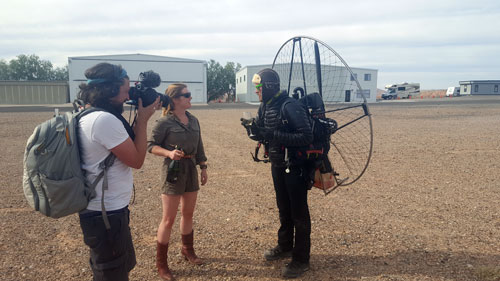
Trey German being interviewed at the finish line in Mesquite, Nevada. (all photos by Andrew Egan)
The kind of person who flies with only a lawnmower engine and a fancy bedsheet
On a beautiful Sunday morning in early October, a small collection of pilots gathered in Polson, Montana for a race. The term pilot might be a little misleading for laymen as the aircraft they fly aren't regulated by the Federal Aviation Administration (FAA). A powered paraglider, also called a paramotor, is one of the cheapest and most basic ways to fly. To most seeing one for the first time, it also looks like a batshit crazy thing to do.
(The Toll Road/YouTube clip)
Put simply, a paramotor is an engine with props (spinning blades) and a fabric wing. So, basically, a lawnmower engine and a fancy bedsheet. To take off, pilots turn on their motor, catch wind in their "wing", and start running. If the conditions are right, they quickly gain speed and, hopefully, take flight. Of course, that doesn’t always happen. The altitude of many of the landing points during Icarus exceeded 4,000 feet. The air was thin and face plants were common.
"The air changed on me," Dean Kelly explained after a failed takeoff attempt outside of St. Ignatius, Montana. An Australian that's piloted paramotors for over two years, Kelly cracked two props and damaged the outer cage surrounding his motor. Fortunately, he was not hurt.
For the uninitiated, the risk associated with paramotoring often seems too great. James Borges, a pilot from the United Kingdom, explained the appeal by making an ‘X’ with his arms, symbolizing a risk/reward graph.
"It’s not really about risk, we try to manage risk as much as possible. If we do that, we get to fly in a way few people experience."
One of the few studies on extreme sports athletes found that emotional management, especially of fear, is common. Participants are eventually rewarded for successfully managing risk and fear with a healthy dose of adrenaline and dopamine, the chemicals in the brain responsible for sensations of happiness and satisfaction.
"Dopamine plays an important role in the reward- and motivational systems in the brain, and high levels of it leads to feelings of well-being," an overview of the study reads. “...The experience of fear induced by risk may be compared to the response people have after surviving dramatic incidents such as serious illness, car accidents or traumas. People often report that these experiences change their lives. Such experiences may in the longer run lead to personal development and increased appreciation of life.”
Talking to a paramotorist after a flight involves a fair amount of high fiving and handshaking. Phrases like, "pumped", “Yeah boy!”, and “holy fucking shit man” are routinely bandied about. It takes at least fifteen minutes for the excitement to reduce to a simmer. Attempts to conduct proper interviews after flights were more or less pointless. Pilots, for whatever reason, tend to downplay the role adrenaline plays in their decision to paramotor.
"When you first start, oh yeah, there's always an adrenaline rush," said Trey German, an engineer from Texas that's been flying paramotors for nearly three years. “After a while, you really only feel it during maneuvers or extreme conditions.”
Which might explain why these pilots would choose to participate in the Icarus Trophy, claimed by its organizers to be the world’s toughest air race. The 2016 version of the race started in Polson and ran 1,100 miles through five states before ending near Las Vegas. This course was 300 miles longer than the previous year’s, which ran from Seattle to Sacramento.
"During one flight, I experienced hail, snow, rain, and turbulence," Kelly said about the experience. “I had never dealt with those conditions before and I got to deal with them all at once.”
7
The total number of pilots that flew during Icarus 2016. All but one finished. The 2015 race featured 33 pilots, many of which were injured, including a severely sprained ankle and a broken wrist.
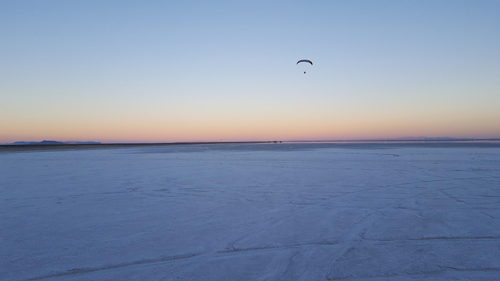
A paramotor pilot flying at sunset over the Bonneville Salt Flats in Utah.
Snow and Sleet and the Smell of Feet: A view of Icarus from someone who followed along
In its second year, the Icarus Trophy tormented competitors and their support staffs with cramped living conditions, unpredictable precipitation, and broken equipment. Some of the most experienced paramotor pilots in the world participate in Icarus but even they’re not immune to accidents. On the first day, Scotty Duncan, a well known Australian pilot, blew an engine and had to repair it with the help of a local machinist, who was also kind enough to serve him elk stew.
"It’s part of the experience and adventure," Kelly said after his failed attempt to launch on the first day. “Where’s the fun if everything goes right?”
Injuries during Icarus are all too common. The 2016 race was largely injury-free though most pilots dealt with tumbles and muscle strains. German even landed among thick desert shrubbery and had to remove his pants to pull out dozens of thorns. Still, these incidents pale in comparison to 2015 when injuries included a broken wrist, a severely sprained ankle, and a broken back. By one estimate of a competitor during that race, some fifteen percent received some form of injury. Clearly, paramotoring is a dangerous sport but exactly how dangerous is difficult to discern.
Some back of the envelope math done by German found that paramotoring is about as safe as riding motorcycles. One of the issues in determining the exact risk associated with paramotoring is the relatively small size of the community, not just in the United States, but around the world.
"There are maybe twenty or thirty thousand paramotorists in the world but ones that fly regularly is much less, maybe ten thousand." German quickly added, “And there are only seven pilots with the balls to take on Icarus.”
A few places on the Icarus trail
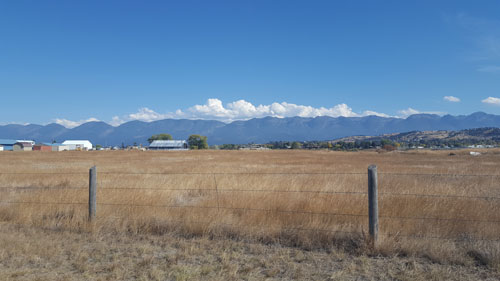
Polson, Montana: Start line of the Icarus Trophy, elevation 3,000 feet above sea level.
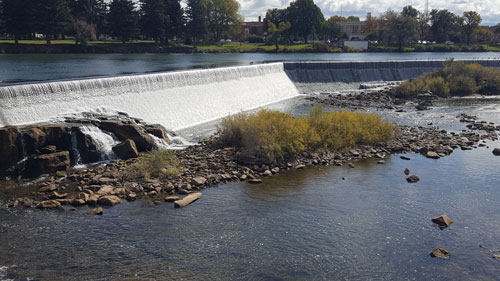
Idaho Falls, Idaho: The Falls of Idaho Falls. One of the larger cities along the Icarus route, Idaho Falls is also home to Idaho National Labs, the country’s only nuclear reactor test site.
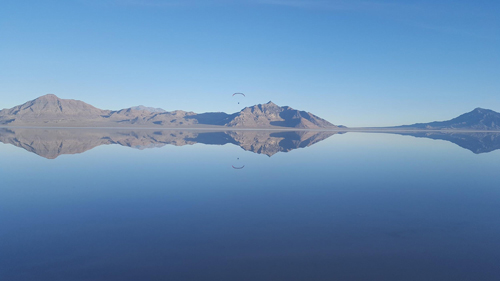
Bonneville Salt Flats, Utah: Maintained by the Bureau of Land Management as a race track, the Bonneville Salt Flats weren’t technically on the Icarus route. A few of the competitors decided to make the drive for a day of spectacular flying. We arrived a day or two after rains left an inch of water across the salt plain. Several land speed records have been set at the Flats.
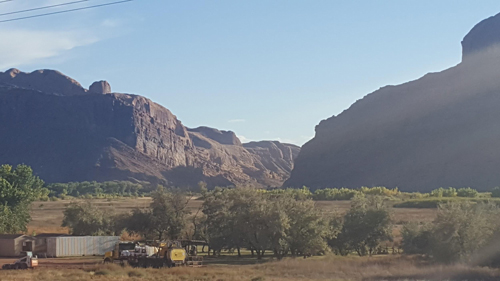
Moab, Utah: A beautiful resort town near Arches National Park, Moab is surrounded by beautiful red rock mountains and unique geological formations, like the Delicate Arch.
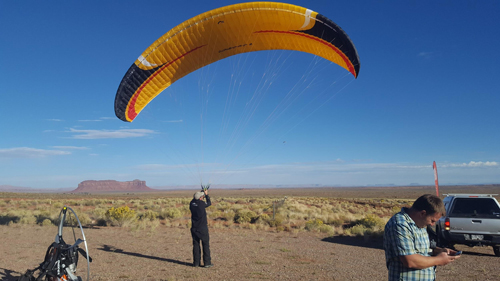
Monument Valley, Utah: In southern Utah, near the Arizona border, much of the area belongs to the Navajo tribe. This iconic landscape has been featured in dozens of films and TVs shows, including Forrest Gump and Back to the Future Part III.
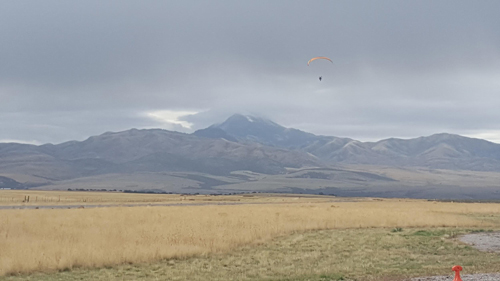
Downey, Idaho: A small town in Southern Idaho with a grass strip airfield, Downey forced competitors to race against weather and make decisions that could have fatal consequences. Miroslav Svec is pictured here attempting to beat an incoming storm to the mountain.
Motorcycles are probably the best analogy to understand paramotors. As a concept, neither are particularly dangerous unless speed, terrain, or trick maneuvering are involved. However, even experienced pilots of fixed-wing aircraft (a regular airplane) often think the paramotorists landing at their airports are a bit crazy. Throughout the race, pilots routinely cautioned the competitors from taking off due to weather. They went anyway.
"Challenging yourself to do new things is a big part of Icarus," German said. “If this were easy and without risk, it wouldn’t be as fun or memorable.”
After traveling with the Icarus competitors through five states and more than a thousand miles, I’m only now starting to understand. That’s the whole point.
Andrew Egan is a writer living in Texas. He’s previously written for Forbes Magazine and ABC News. He just completed his first novel, Nothing Too Original, and his collection Drink Your Whisky Like a Man spent one week on Amazon’s American poetry best seller list. You can find his terrible website at CrimesInProgress.com.




